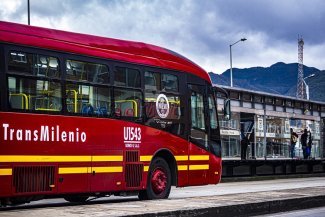It’s an early March sunny, post-Friday prayer afternoon in Occupied West Bank.
Clashes over continued prison hunger strikes have been erupting for weeks.
Groups of youths run through the hills of Bituniya adjacent to the Israel’s Ofer military prison near Ramallah, setting tyres on fire and throwing stones at soldiers who lob teargas and rubber bullets in return.
Today, the youth are full of anger at the death of 30-year-old Arafat Jadarat – a Palestinian man who died five days prior, while being held for interrogation in military custody.
Pronounced dead on 23 February, an autopsy of Jaradat’s body found broken ribs, blood on his face and lacerations on his back.
Amidst Israeli denials, Palestinians concluded he had been tortured to death.
This ignited the kind of West Bank unrest first instigated by prisoners hunger-striking against their detention and internment conditions.
Perhaps the best-known example is that of 33-year-old Samer Issawi who has now been refusing food for 240 days in response to being held in detention without charge or trial.
As the hunger strikes wore on, local discontent mounted, bubbling over into stone throwing youth confronting armed Israeli soldiers.
Then, just as international attention turned to Issawi’s plight, Jaradat died in Israeli custody.
He was arrested and interrogated for alleged stone throwing.
With virtually every Palestinian having a relative who has been through Israeli incarceration, the prisoners are a deeply personal issue, making them the latest lightning rod for protests and clashes around the Occupied Palestinian Territories.
But while Israeli officials and media mull over the potential of a new Intifada, the reality is that the current unrest is fuelled more by despair at the current conditions of occupation than any real attempt at mass social mobilisation.
“We have been doing this for years and things haven’t changed, they’ve only gotten worse,” says Issa (not his real name), a 14-year-old taking part in the clashes at the edge of Ofer.
Army jeeps bolt past towards the lines of masked young people about 100 metres away.
As the youths run, the jeeps screech to a halt and soldiers jump out, firing a barrage of teargas and a hail of rubber bullets towards the retreating crowd.
Issa turns towards me and says, dejectedly, that he has no faith that the Palestinian Authority (PA) will achieve freedom for the Palestinian people, or that anyone is truly backing their cause.
The softly-spoken teenager from Bituniya regularly takes part in protests and clashes, but not because he thinks it will lead to justice for the prisoners or to a process of liberation.
Rather, his participation is more about the spectacle. There is a feeling that making symbolic gestures against Israeli rule is all young Palestinians can do.
“I come here for many reasons, not just the prisoners,” Issa says as a string of concussion grenades go off.
“Months ago my cousin, who is 21, was shot when heading to the supermarket. I come here often, sometimes I get in it, sometimes I don’t, but it’s never a good day.”
Political divisions
The torture and humiliation of jailed Palestinians, increasing settler land seizures, new segregated buses for the dwindling number of Palestinians able to actually earn a day’s wage in Israel, and November’s attack on Gaza have created enough grievances to fuel several Intifadas.
However, instead of fuelling a new grassroots revolt, the outrage simply serves as an outlet for anger over the current dimensions of occupation.
It is part of the cycle of Israeli provocation and localised outbursts of Palestinian anger that has existed since Israel’s 2008 invasion of Gaza.
Whether it’s been an Israeli military assault, rounds of prisoner hunger strikes, economic deterioration, nationwide mobilisations to commemorate the Nakba (1948 expulsion of Palestinians) or Arab Spring-inspired protests, all resistance has fizzled out amidst continued political division.
Now, as another round of unrest followed by a US presidential visit grabs headlines, there is a real sense of frustration about what to do next.
Though many activists say a grassroots uprising like the 1987 Intifada is more necessary than ever, the action taken by labour unions, civil society and community organisations which made mass non-compliance with the occupation possible is completely absent.
What you find today is factional political rhetoric and posturing.
Sucked into national divisions that prioritise party loyalty above all else, the possibility for any of the factions to produce anything more than symbolic displays of force is questionable.
It is a reality that was clearly on display at Jaradat’s funeral.
Burial
On 25 February, thousands of people from all Palestinian factions—from the Marxist Democratic Front for the Liberation of Palestine to Islamic Jihad – poured into the small village of Sa’ir adjacent to Hebron to bury Jaradat.
The occasion was also used to acknowledge the sacrifice made by Palestine prisoners and demonstrate total commitment to liberation.
As the smell of marijuana wafted around the village, masked fighters affiliated with Fatah’s Alaqsa Martyrs Brigade fired gunshots into the air and distributed leaflets promising vengeance.
Wandering through the crowds and flanked by a young member of Islamic Jihad holding party flags, former hunger striker Khader Adnan paraphrases Quranic text about the killing of innocents: “When Arafat was killed it was like they killed all the people of Palestine,” he says flatly.
Jaradat’s body is off-loaded from a Palestinian Authority security forces truck and given a military gun salute before being buried in the central square.
As this happens, the sense of hopeless impotence that has marked descriptions of his arrest becomes stifling.
“We woke up when they arrested him,” says Jaradat’s cousin who shares his full name.
Standing across the street from the house where Jaradat’s widow and two children reside, his cousin points to the house where he was arrested.
“They beat him with their rifle butts and all the neighbours woke up from the sound of him screaming.”
He says that before his cousin was taken away, the working-class petrol station attendant and Fatah activist was taken to his wife by the soldiers and “told to say goodbye.”
The next time Jaradat returned home was in a coffin for his funeral.
As I wander through the grieving crowd, talking to villagers and Jaradat’s family members, people tell me: “This is what Israel does to us. What are we supposed to do?”
Cloaked in directionless rage and sorrow, the crowds begin to dissipate as the funeral ceremony concludes.
This time the funeral isn’t followed by the kind of fierce checkpoint clashes that are customary after Israel’s military claims the life of a young Palestinian.
No one appears to have the energy for yet another attempt at shaking off the occupation.









